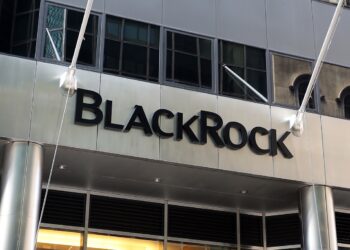In their 2026 global investment outlooks, both Amundi and Northern Trust Asset Management have pointed to a year ahead defined less by slowdown and more by a careful balancing act.
Amundi expects the coming year to be a period of adjustment as the global economy settles into a phase of “controlled disorder”, with the tech revolution reshaping what is already a multipolar world.
“The cycle keeps extending, supported by perceived ample liquidity, easing monetary policies, industrial policy shifts, and – so far – low pass-through of tariffs in the economy,” its investment outlook stated.
Meanwhile, Northern Trust said it expects the global economy to keep growing by maintaining momentum to avoid recession, with supportive policies and lower interest rates compounding this effect.
While both agreed that the global economy will continue growing in 2026, Amundi added that it expects that growth will be slower, forecasting global GDP growth of 3.0 per cent in 2026 – moderating from 3.3 per cent in 2025 but still comfortably positive.
At the same time, both asset managers cautioned that 2026 carries notable risks, with inflationary pressures being most prevalent.
Northern Trust’s global co-chief investment officer, Chris Roth, cautioned that price pressures could flare up again.
“While we expect inflation to remain contained at its above-average rate of about 3 per cent, investors must closely monitor the tail risks of inflation reigniting.
“The Federal Reserve’s [Fed] balancing act between fighting inflation and supporting the labor market risks inflation levels staying above target,” Roth said.
He added that tariffs and tighter immigration policies may also put pressure on prices through goods and wages.
Amundi similarly highlighted that structural inflation pressures, such as supply-chain reconfiguration to energy transition costs, may cap the pace of disinflation.
“Multiple factors could reverse it [global economy growth], spanning from adverse events related to high levels of public debt in major economies, high market concentration and valuations, the credibility of central banks and where real rates may stabilise,” the firm’s report stated.
Nevertheless, Amundi said it expects to see the Fed ease rate cuts twice in the first half of the year, with the European Central Bank (ECB) and the Bank of England (BoE) also cutting more aggressively to support domestic demand.
Regional outlook
Despite overall positive positioning, the global outlook was far from uniform for either firm.
Focusing on US equities, Amundi said it expects a shallow slowdown before growth re-accelerates toward 1.9 per cent in 2026, and considers the artificial intelligence (AI) capex cycle as “unsustainable”, adding that it will need to moderate before productivity gains materialise.
Northern Trust agreed, arguing that while US stocks remain supported by fundamentals, stretched valuations and narrow leadership – especially among mega-cap AI names – require selective positioning.
For European equities, Amundi said it predicts growth will remain below potential at 0.9 per cent in 2026, noting however that momentum should build as reforms and Germany’s fiscal plan gain traction.
Echoing its stance from last year, the firm has again backed emerging markets – particularly Asia – as a key growth engine heading into the next year.
Selectivity and diversification
Summarising his firm’s outlook, Amundi’s group chief investment officer, Vincent Mortier, said that in a world where recession is avoided but volatility stays high, investors will need to be more selective and diversify more broadly.
“Diversification remains the most effective defence in a world of concentrated equity markets and high valuations.
“Investor portfolios must rebalance across styles, sectors, sizes and regions to mitigate risks and capture opportunities, notably in emerging markets and European assets,” Mortier said.
The asset manager said it eyed opportunities “beyond the AI-race” into the broadening tech theme, highlighting industrials, infrastructure, electrification and green-transition plays.
Meanwhile, Northern Trust stressed that the era of passive beta is fading, with quality, value and low-volatility factors becoming more critical as the equity market’s leadership narrows.
In the fixed income realm, Amundi favoured quality credit, European sovereigns and inflation-linked instruments.
Northern Trust highlighted treasury inflation-protected securities (TIPS) as a compelling hedge, warning that relying solely on US Treasuries for diversification is outdated.
Both firms agreed that inflation hedging and global opportunity sets will be essential in 2026.
Regarding alternative assets, Northern Trust highlighted opportunities in asset-backed finance, distressed credit, and real estate debt. It also noted the compelling case for real assets, particularly given infrastructure’s strength as an inflation hedge.
Amundi echoed support for private credit and infrastructure, adding that diversification going forward should also include broader commodities and currency exposure.







